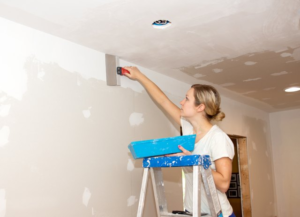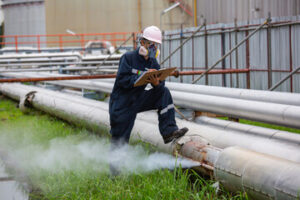Whether you want to remodel a room or construct a new building, general contractors are responsible for completing your construction endeavor. These professionals coordinate and schedule workers, purchase and deliver materials, and ensure adherence to project specifications.
Many general contractors receive their training through on-the-job experience and various educational programs. In addition, some states and local governments require that GCs be licensed. Contact General Contractors Lexington KY now!

GCs typically work on large-scale projects, requiring them to be licensed to operate. Licensing procedures vary by state, but most require firms to file an application and submit proof of workers’ compensation insurance coverage, a surety bond, financial information, and more. Qualifying parties may also be required to pass business management and construction discipline exams. Some states also require licenses for specific trades, such as electrical or plumbing work.
Once a GC is licensed, they can begin planning the initial stages of your project. This includes working with an architect to create a design and finalize the details for the project, as well as creating a budget and timeline. In addition, a GC will coordinate with specialized tradespeople and procure the necessary materials and equipment. They may also be responsible for obtaining permits and making sure the project meets all legal requirements.
A GC will also make certain that building supplies are installed correctly and will maintain any product warranties or guarantees. They’ll also ensure that the work site is safe for employees, clients, and contractors, as well as protect existing structures with drop cloths and clean up after every day’s activities.
GCs are expected to know the latest trends in technology, construction methods, and best practices. They should be able to anticipate any potential roadblocks before they occur and develop a plan to overcome them. Choosing a contractor with experience will help your project avoid costly errors and deliver results that align with your vision. Those with more years of practical experience also have wider networks, making it easier for them to find high-quality subcontractors. This is a huge advantage for you as a client, since it reduces the risk of any delays or unforeseen costs.
Bidding
Bidding and contract negotiations are the foundation of a general contractor’s relationship with project owners and subcontractors. Contracts set forth responsibilities, define the scope of work, and establish the schedule for completion. In addition, they establish the terms and conditions of how project payments are made.
When preparing to bid on projects, it is important for general contractors to understand the project delivery method as it will impact how bids are solicited. For instance, Design-Bid-Build requires the client to provide detailed plans that are used to solicit bids from general construction firms. In contrast, a turnkey contract involves the GC hiring a single firm to handle both design and construction.
During the bid process, it is essential for general contractors to shop around for the best prices on the supplies required to complete the work. They should also keep a record of all cost estimates that are given so they can compare them when the time comes to negotiate contracts. In the end, a contractor needs to balance the need for low bids against the need to stay in business and grow their company.
Another key consideration in the bidding process is determining which risk provisions will need to be negotiated. As a rule, project owners want to shift the risks to the general contractor while contractors prefer the opposite. Managing these risks is critical to keeping the project on schedule and within budget.
In the final stages of bidding, it is important for GC’s to thoroughly review the project details including the scope of work, schedule, and any other requirements that may affect their performance on the job. They should also carefully study the insurance coverages of their own and their subcontractors. These policies often have different limits of liability, which can put the GC at risk.
Contract Negotiation
A general contractor performs a number of different tasks for their clients. Depending on the type of project they manage, they may need to plan the work schedule, source materials and equipment, and hire subcontractors to complete the project. Additionally, they may need to secure the necessary building permits and arrange city inspections. These tasks are incredibly important, and they can be complex.
Many GCs are also responsible for the project’s financial management. This means they must negotiate with the property owner on payment terms and schedules. This can be a difficult task, especially when the property owner has little knowledge of how much the project will cost. It’s important for GCs to understand their client’s budget and operational goals in order to make sure they’re negotiating fair contract terms.
During contract negotiations, it’s essential for a general contractor to remember that each party is a person with different emotions. This can affect how they approach issues during the negotiation process, especially if they’re arguing against their own interests. Keeping this in mind can help them keep the conversation on track and achieve positive outcomes for their clients.
Another key area of contract negotiation is risk. While most owners and GCs want to shift as much of the risk onto their contractors, this can be challenging to do without impacting the project’s scope or schedule. Getting a clear understanding of the risks involved and negotiating with this information in mind can be a key way to avoid disputes during the construction project.
Finally, a general contractor must be familiar with specific state laws regarding contract language. Many contracts include language that doesn’t jive with state laws, which can lead to costly delays for all parties. GCs that are aware of these issues can use this information as leverage to get their clients to revise their contracts to comply with state law.
Managing Subcontractors
General contractors need to have a solid understanding of how each subcontractor’s work fits into the project’s overall scope and goals. This understanding helps prevent misunderstandings and reduce the likelihood of costly scope creep. During contract negotiation, the GC and subcontractors work together to establish clear outlines regarding payment terms, project milestones and dispute resolution mechanisms.
During the project execution phase, a GC must keep subcontractors apprised of progress and any new developments. This promotes a spirit of cooperation and collaboration. It also allows for feedback from specialty trades, which can help avoid expensive rework or delays. GCs can use pull planning, a collaborative scheduling technique, to harness subcontractors’ expertise and insights during this stage.
At this point, a GC must monitor subcontractors to make sure they’re on schedule and meeting quality standards. He or she may also request – and follow up on – change orders to address unforeseen obstacles or challenges.
As a general rule, it’s best to get all agreements in writing. Verbal agreements are easily forgotten or misinterpreted, and can’t stand up to legal scrutiny the way a written contract does. This is especially important for establishing subcontractor expectations and procedures.
With the current construction labor shortage, it’s more important than ever to manage subcontractors properly. Unexpected obstacles can arise that impact the project’s timeline and budget. Identifying, assessing and managing these risks can minimize the likelihood of legal disputes and operational disruptions.
Even if you’ve worked with a particular subcontractor in the past, it’s always wise to perform pre-qualification checks before hiring them for your next job. Their certifications might have lapsed, their crew members could have switched jobs and other factors that can impact the quality of their work.
Safety
A general contractor can improve a construction project’s outcome by ensuring all parties involved are on the same page regarding safety procedures. They often manage workers, provide utilities on site and secure the property. They also perform engineering functions and are responsible for the disposal of construction waste. Some general contractors take part in university programs or online certification courses to expand their skill set and increase business opportunities.
Before construction begins, a GC is responsible for developing a budget and reaching a consensus with all parties regarding what needs to be done. During construction, they’re always working to keep the project on schedule and within budget, and they collaborate with the architect and additional contractors to ensure that all work is completed according to specifications.
When selecting subcontractors, a GC must vet them for their expertise, experience and safety record. Clear contractual agreements are then put into place to outline the shared responsibilities of each party. Regular safety meetings are like family gatherings that bring everyone together to discuss progress, ideas and concerns.
A good GC is a master of open communication and realistic expectations, understanding the unique challenges of working in an urban setting. They’re honest about budget limitations and are able to quickly and effectively communicate the impact of unexpected challenges on the project timeline.
Contractors must adhere to all federal, state and municipal laws, codes and regulations pertaining to workplace safety and health, including those issued by OSHA. They must also comply with any union-negotiated safety rules and standards in their contracts with employers. They’re also liable for the actions of their non-employee subcontractors, so a GC must enforce proper workplace safety protocols to avoid any legal liability.








